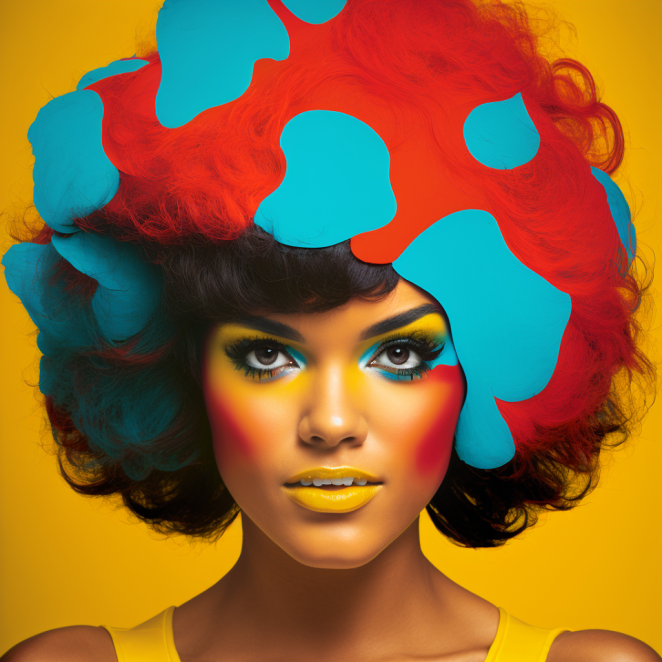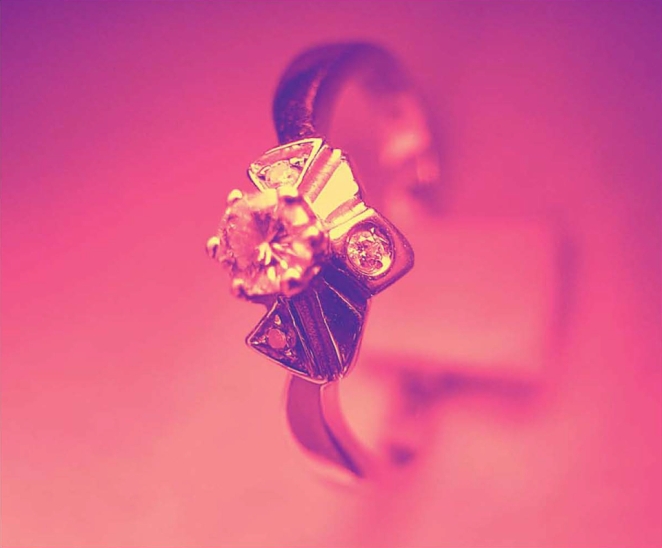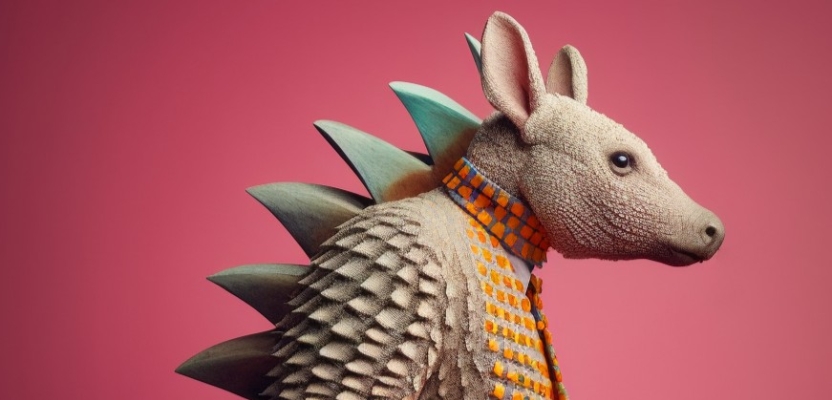Gianfranco Fagotto's journey through the creative industry is nothing short of remarkable. From his early days as a Junior Art Director at Milan's famed Voice Millimetro agency, to leading transformative branding projects for global giants like NetJets and the Financial Times, Gianfranco has consistently pushed the boundaries of design and creativity.
Now based in London as a freelance Creative Director, his work continues to evolve, merging his rich, multicultural background with a deep passion for design. In this interview, Gianfranco shares his insights on creativity, technology, and the ever-changing landscape of the design world, offering invaluable advice for aspiring creatives.
How did you first get into the industry?
I moved from South America to Milan, Italy, where I started an internship at Voice Millimetro agency as Junior Art Director. At the time, early 2000s, it was one of the ‘hottest’ design agencies in town.
After one year, I fell in love with magazines after flipping through the pages of Ray Gun magazine, and said to myself ‘I want to be doing that for a while!’; I then started working as an editorial designer for art, design, and fashion magazines. Did It for 7 years before relocating to London in 2008.

In London, I joined Liz Earle Beauty in 2010 and later became Head of Design at NetJets in 2013. At NetJets (a private jets company owned by Warren Buffett), I led a significant post-merger rebranding initiative and global advertising campaigns.
From 2016, I worked as Art Director at the Financial Times’ in-house content agency, where I directed branding projects, content hubs, and digital display campaigns for high-profile clients such as AWS, BlackRock, BMW, Google Cloud, and The Macallan, among others.
Where are you based now and who do you work for?
Still in wonderful London and have been working as a freelance creative director, brand designer, and illustrator since 2023. I collaborate with agencies and work independently, focusing on small and medium-sized companies in the aviation and lifestyle sectors. My role involves helping these businesses achieve their goals through emotion, strategy and creative expression.
Recently, I’ve had the opportunity to develop brand and visual identities for two exciting startups: Global Airlines and Replete. With Global Airlines, I have been fortunate to work alongside the founders and their brand director, contributing to various aspects of their projects, including developing brand, visual, and verbal identity systems, as well as designing components of crew uniforms. For Replete, a new post-workout energy drink targeted at a female audience, I’ve also been involved in creating its brand identity.
What is your personal background and what role did it play in your career?
I’m Italian-Ecuadorian, and I grew up as a tiny globetrotter, living and travelling with my parents across Latin America, Africa, Asia, and Europe. My nomadic upbringing was like a crash course in diversity, languages, storytelling, and the power of creativity.
After finishing my studies at the French lycée, I was uncertain about my future. I considered paths such as diplomacy or joining the Italian Navy.

However, my mother suggested I explore Architecture or Graphic Design, recognising my interest in drawing Nike shoes and cartoons, as well as building and disassembling things.
Although Graphic Design seemed like an unexpected choice at first, I soon fell in love with it because it encompasses various disciplines—such as psychology, art, culture, technology, visual language, and other humanistic fields—that I was already interested in. This integration of diverse areas of study allowed me to blend my creative passions with a deeper understanding of human behaviour and communication.
If you weren’t in your current industry, what would you be doing?
This is a fantastic question! I do think about it often, not out of regret but from a passion for creating and gaining new skills. My choices would be between becoming an architect, a scientist, or a photographer. Each of these fields appeals to me because they share a fundamental aspect: the process of creation and understanding how things are built and harmonised. I enjoy creating and exploring how different elements come together!
As an architect, I would be deeply involved in designing spaces that balance functionality, aesthetics, and harmony, much like creating visual identities in design. The challenge of building something from the ground up and seeing it come to life would be incredibly fulfilling.
As a scientist, the exploration and discovery process simply fascinates me. I’m drawn to the idea of uncovering how things work at a fundamental level, experimenting with concepts and theories, and understanding the intricate details that contribute to larger ecosystems.
Photography also intrigues me for its ability to capture moments and perspectives that tell a story or evoke emotions.
Can you explain your creative process? What makes it unique?
Everything at the beginning is chaotic, so you have to understand that process is key to gradually start connecting the dots. Repeatable process creates predictive results as they say.
My creative process is characterised by a blend of curiosity, personal vision, and a strong desire to create memorable work. I follow the 5Ds: discovery, define, design, develop, and deploy. I begin by immersing myself in diverse sources of inspiration—such as blogs, YouTube videos, and websites—exploring new ideas and perspectives from various cultures and disciplines. I find it useful to create style scapes—mood boards on steroids—to establish a broad compass direction that will support future design decisions.

I like to come up with design options until the concept reaches its limits, which helps me gauge how far I can push the original brief.
Empathy is central to my approach, enabling me to understand and connect with both the audience’s needs and the client’s goals, challenges, and vision. This ensures that my designs are not only visually appealing but also deeply aligned with the client’s objectives.
How would you describe your style?
My design style focuses on a strong creative vision, experimentation (never exhaust the possibilities during the creative process), strategy, and creative expression. I aim to use creativity with purpose, pushing boundaries and exploring new ideas while aligning visual elements with business goals to achieve meaningful outcomes.
My approach emphasises modern design, strong visual impact through clean typography, and thoughtful layouts. I also value minimalism and functionality, focusing on essential elements to create designs that are both elegant and effective, and most importantly, work for the client’s business.
Which individuals do you gain inspiration from? Do you have any heroes in the industry?
Oh Gosh, so many amazing creatives! Fabien Baron, when he was the Creative Director of Vogue Paris; David Carson, for breaking traditional design rules and his work for Ray Gun magazine.
I loved the chaotic and abstract layouts; and MM Paris are all sources of inspiration. Lately, I have been drawing inspiration from Chris Do of The Futur. I admire his commitment to teaching creatives how to become better entrepreneurs.
What tips would you give to aspiring creatives looking for work?
Learn how to present clearly your work. Don’t be afraid to be selective about it. You don’t need to showcase everything – just the stuff you love, that shows you off best to your potential clients.
Be comfortable talking about yourself and your work. Think about the value you can bring to them. Show what you are passionate about!

Be disciplined. Think about it like this: discipline is the difference between what you want now and what you want most.
What tips would you give to other professionals to get more clients?
Know what is your personal brand. Learn to sell and know your numbers and metrics. You have to be able to speak about figures whether you are an in-house employee at a Director level or a freelancer working for agencies or independently.
As soon as you complete a project, show it to the world.
Lastly, network, network, network.
Can you share a memorable experience from your career journey that shaped your approach to creativity?
One of the most memorable experiences that shaped my approach to creativity was when I got to work at NetJets. Simply because of the diverse markets we were serving, the clientele (UHNWI), and variety of projects (from various platforms and media, including digital storytelling, print, packaging, advertising, and event collateral for high-profile events like Art Basel, the Grand Prix de Monaco F1, and PGA Tournaments).
I met so many talented people, internally in the company but also got to work with award-winning photographers and agencies; their way of making things and tackling our briefs broadened my perspective on creative problem-solving and reinforced the value of collaboration and innovative thinking. At that time I discovered what UX and UI were and how to use them to build NetJets first mobile application.
This experience taught me the importance of deep cultural understanding and adaptability in crafting effective brand narratives.
What kind of tools/kit/software could you not do without?
My Ottergami notebook to scamp and draw, a fine line pen, and a highlighter. In terms of software, Create Pro and a few AI tools for quick ideas/mockups.
What’s your secret to staying inspired and motivated?
Look at what other great designers are producing, learn about new generations and what makes them tick, learn their language;

I like to read, not only about art, design or typography, but also philosophy, languages, science, and psychology. I am always fascinated about what new points of view, discoveries or cultural nuances you can learn about and from it. I also play regularly Tennis and Basketball, which helps when moments of stress are present for example.
What’s the work achievement you’re most proud of?
I take immense pride in all the projects I undertake, but one of my standout achievements was my work with NetJets. When I joined the company, it was in the midst of a major global merger between US and EU entities (China came into the picture a year later). My initial responsibility was to spearhead the rebranding efforts and update the guidelines to reflect the new unified identity.
This was a significant challenge, as the two companies had used their assets—ranging from logos, marketing collateral, colour schemes to verbal language—differently. Every detail had to be meticulously reviewed and rethought to address market and cultural nuances. I had to ensure that our rebranding could resonate not just in the UK, but across Europe and even globally. This involved crafting a brand identity that would appeal to diverse markets through advertising campaigns, promotions, and event collateral.
The project was a thrilling and rewarding endeavour that marked a new era for the brand. Following this pivotal milestone, I contributed to a variety of projects, including designing new aircraft web galleries with extensive photoshoots and creating welcome kits that highlighted the company’s legacy and leadership to new clients.
As someone with experience in the industry, what trends do you foresee shaping the future of creativity?
In my opinion, AI must be seen as assistive tools. I believe they will make us better creative, thinkers, ethicists and linguists if we learn to use it to our advantage.
What do you think sets apart truly exceptional creatives from the rest of the pack?
Being pragmatic, empathetic, and looking at the world through your own eyes.
How do you think technology has influenced the creative industries and how have you adapted to these changes?
That is the beauty of our industry: you constantly have to learn new skills or at least update existing ones. Technology has profoundly influenced the creative industries, transforming production, collaboration, and audience engagement.
Advanced tools like Adobe Creative Suite and Blender (which I am currently using to create and animate a 3D logo for a client) have democratised access to professional-grade resources, allowing creatives of all levels to produce high-quality work.
Digital platforms such as Slack, Zoom, and Figma have revolutionised teamwork, particularly in remote settings, enhancing collaboration with clients and team members across geographically dispersed locations.

The internet and social media have expanded distribution channels, enabling direct audience engagement and market reach through platforms like Instagram and others. I have had to learn to post at the right times, adapt, repurpose content, and more.
Data analytics now offer insights into audience preferences, guiding more informed creative decisions—it’s both thrilling and exciting, but sometimes it feels like marketers would rather ‘test and learn’ than invest in a big creative concept. I focus on strategy, from researching and segmenting to targeting, leaving tactics and tools to specialists.
Having said that, clients increasingly expect innovative and diverse approaches, prompting me to experiment with their logos and brand identities to ensure they stand out.
Emerging technologies, including augmented reality (AR), virtual reality (VR), and artificial intelligence (AI), push creative boundaries, driving ongoing experimentation and integration into new projects. By embracing these technological advancements and staying adaptable, I’ve enhanced my work and maintained a strong technological edge.
What is the one thing that you would change about the industry?
One significant change that could benefit the creative industry is a deeper integration of AI and digital technologies.
This includes fostering collaboration between human creativity and AI to enhance the creative process rather than replace it, allowing for new forms of expression and innovation while ensuring that artists adapt to and thrive with these advances. It’s essential for industry professionals to develop resilience and continually update their skills.
Any websites, books or resources you would recommend?
The Futur by Chris Do, is an online education platform loaded with content, courses, and tools to help you build better design skills and better creative businesses.

The book ‘Language of Vision’ by Gyorgy Kepes
Designboom.com







